Things to do in Valletta
Valletta's attractions revolve mostly around its architecture, with a number of churches, cathedrals, and other sacred sites taking centre stage. There are other interesting buildings, including historical residences, palaces, and forts, some lavishly displaying the wealth of artwork donated by the Knights of St John.
Attractions in Valletta include the Palace of the Grand Master, St John's Co-Cathedral, the Lascaris War Rooms, and, just outside of the city, the remarkable ancient sites of Hagar Qim and the Hal Saflieni Hypogeum. Tourists should also be sure to explore the historic Three Cities.
For first-time visitors who don't know much about the country, The Malta Experience is worth considering. It provides a great overview of the country's history and culture in roughly half an hour. If visitors are travelling to Valletta with children, there are some fun attractions and excursions to enjoy, including Popeye Village and the Splash and Fun Water Park.
Perched on top of Mount Sceberras and surrounded by the sea on three sides, Valletta has many beautiful views. While there are no sandy beaches within the city itself, the docks and harbour fronts are pleasant areas to stroll along. But beyond the city lie sandy coves if one wants to feel the beach between their toes. Lastly, St George's Square puts on an evening show with jumping fountains and coloured lights, making a perfect ending to a day of sightseeing.
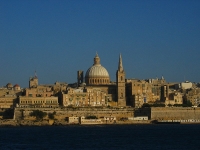
St John's Co-Cathedral
Valletta's magnificent medieval cathedral is famous for the painting by Caravaggio, which hangs in its oratory, and the 369 inlaid mosaic marble tombstones that cover the floor. Ea…
St John's Co-Cathedral
Valletta's magnificent medieval cathedral is famous for the painting by Caravaggio, which hangs in its oratory, and the 369 inlaid mosaic marble tombstones that cover the floor. Each tombstone depicts the lives of the Grand Masters of the Order of St John, buried beneath. The facade is rather sever and militaristic. Yet inside, the cathedral is lavishly splendid in the grandest tradition of high Baroque. Carvings cover every each of wall, while the vaulted ceiling sports paintings depicting the life of St John the Baptist, patron saint of the Knights. The cathedral benefitted greatly over the centuries from many donations given by the Knights and their Grand Masters. Some of the most impressive works of art were gifts from the order. It's still an active place of worship, with frequent services, and also operates as a beautiful venue for cultural events. The stunningly ornate cathedral is an exceptional sight and a must for tourist in Malta. Guided tours and rented audio guides help to greatly enrich the experience. Travellers should be sure to check the website for visiting hours to avoid disappointment.
Website www.stjohnscocathedral.com
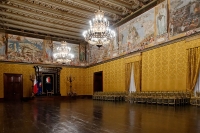
Palace of the Grandmaster
The Grandmaster's Palace, built around 1571, today serves as the office of the President and seat of the Maltese Parliament. When parliament is not in session, the palace and its S…
Palace of the Grandmaster
The Grandmaster's Palace, built around 1571, today serves as the office of the President and seat of the Maltese Parliament. When parliament is not in session, the palace and its State Rooms are open to the public. The palace is a treasure trove of art, from the unique collection of Gobelin Tapestries to frescoes depicting the Great Siege of 1565 by Perez d'Aleccio that cover the walls of the Halls of St Michael and St George. The Knights decorated the palace richly and elaborately, conscious of showing off their wealth and influence. For visitors, exploring splendid chambers such as the Hall of the Supreme Council of the Knights is thrilling. Visitors can also view the Armoury and state apartments adorned with friezes depicting the history of the Order of the Knights of St John. The Armoury is perhaps the greatest attraction of the palace and it boasts one of the largest collections of its kind in the world. Malta has a tumultuous history and the Armoury holds the assorted weaponry of centuries of invasions, sieges, and battles, making it a paradise for military history buffs. Guided tours are available and wonderful audio guides offer comprehensive commentary.
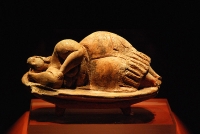
National Museum of Archaeology
The National Museum of Archaeology in Valletta houses one of the inns of the Knights of St John: the Auburge de Provence. The establishment's focus on Malta's prehistory includes d…
National Museum of Archaeology
The National Museum of Archaeology in Valletta houses one of the inns of the Knights of St John: the Auburge de Provence. The establishment's focus on Malta's prehistory includes displays such as the reconstruction of prehistoric remains found at the Hypogeum. Pottery, sculptures, statuettes, stone tools, and jewellery from the prehistoric, megalithic, and temple-building periods feature. Punic and Roman tomb furniture are also present, with all exhibits sourced from excavations across the Maltese islands. The age of some artefacts is staggering. Only those interested in archaeology will fully appreciate the wonders on offer, its treasures wasted on those easily bored by ancient histories and cultures. Young children especially should give it a skip. The collection is well-maintained and labelled, with exhibitions in chronological order.
Website heritagemalta.org/national-museum-of-archaeology/
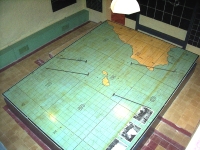
Lascaris War Rooms
Valletta suffered great damage during World War II bombing raids. The war defence of Malta took place in the Lascaris War Rooms, with the island always holding a strategic military…
Lascaris War Rooms
Valletta suffered great damage during World War II bombing raids. The war defence of Malta took place in the Lascaris War Rooms, with the island always holding a strategic military importance far out of proportion to its size. Some of the most famous battles fought in the Mediterranean during the war were coordinated from these headquarters, a 17th-century underground complex of tunnels and chambers. Now restored, it acts as a museum with displays of charts, models, and dioramas. It's fascinating to see all the old wartime paraphernalia and to explore the once top secret military operating rooms. Guides are enthusiastic and well-informed volunteers who greatly enrich the experience. Tours are conducted in English and take 75 minutes, after which visitors can freely stroll the grounds.
Website www.lascariswarrooms.com
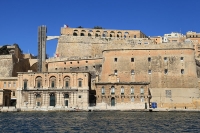
Malta Experience
The Malta Experience is a dramatic presentation that illustrates the history of Malta, from Neolithic to modern times. Shown at the Mediterranean Conference Centre at St Elmo's bas…
Malta Experience
The Malta Experience is a dramatic presentation that illustrates the history of Malta, from Neolithic to modern times. Shown at the Mediterranean Conference Centre at St Elmo's bastion in Valletta, the building originally served as a hospital by the Knights of St John in the 1500s. Wards are now great sweeping halls with vaulted ceilings and marble floors, functioning as exhibition areas. A modern theatre the Malta Experience audio-visual show in 17 different languages. The show is a sweeping expose of 7,000 years of history covering the original stone-age inhabitants, the Phoenicians, the Romans, the Knights of St John, and the nation's modern history. It is as entertaining as it is educational. Indeed, the Malta Experience is a great way to begin a holiday in Malta as it provides an overview of the archipelagos' dramatic history and greatly enriches the sightseeing to come. This is particularly useful as not all sites on the islands have detailed information for tourists. The documentary also offers great insight into the Maltese culture and people. About 45 minutes long, the Malta Experience is immensely popular and more than four million visitors have seen it since its opening.
Website www.themaltaexperience.com
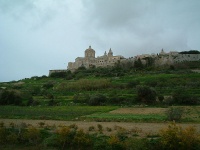
Mdina
Known as the Noble City, Mdini was the original capital of Malta before the arrival of the Knights of St John in the Middle Ages. Initially a Phoenician town, it underwent periods …
Mdina
Known as the Noble City, Mdini was the original capital of Malta before the arrival of the Knights of St John in the Middle Ages. Initially a Phoenician town, it underwent periods of Roman, Arbaic and Norman occupation. Situated on a rocky outcrop about nine miles (15km) west of Valletta, the elegant walled settlement can trace its origins back more than 4,000 years. Although today, all that remains is the largely restored medieval town. At the heart of Mdina is the landmark Baroque Cathedral of St Paul. While the Knights reigned over Malta the city became the home of the Maltese nobility, who lived there under autonomous rule and deemed unworthy of joining the Order of St John. Descendants of some of these families still live in the city. Mdina and the ancient suburb of Rabat not only offer some fascinating and valuable sightseeing opportunities, but also come alive in their own unique ways when the sun sets. Lamplight accompany ambient evenings spent in restaurants, tucked away in bastions and palace courtyards. Motor vehicles are banned inside the city walls, and pedestrians have free reign to walk the streets and take in this precious site of Maltese heritage.
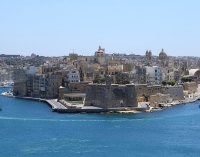
Three Cities
Malta's main maritime towns have merged into a fortified conglomerate known as the Three Cities, resting on the promontories opposite Valletta. Vittoriosa is the oldest town in Mal…
Three Cities
Malta's main maritime towns have merged into a fortified conglomerate known as the Three Cities, resting on the promontories opposite Valletta. Vittoriosa is the oldest town in Malta after Mdina, featuring plenty of historical architecture, including several of the Inns of the Knights of St John. There is also a hospital built by the Order in 1672, in which still lives a Benedictine convent of devout nuns. Dating from 1274, Fort St Angelo is the oldest fortified part of Vittoriosa and stands at the tip of the promontory. Additionally, the Museum of Maritime History is well worth a visit. Founded in 1717, Cospicua is the youngest of the Three Cities and features some fascinating churches. Senglea, designed by Grand Master De La Sengle in 1551, exists as an important pilgrimage destination. Its parish church contains a statue of Christ the Redeemer, said to have miraculous powers. There are many great restaurants and bars in the Three Cities and the marina area is becoming increasingly popular. The best way to explore is on a walking tour, wandering through the old districts and discovering unexpected joys and treasures. Apart from the rich history, the Three Cities are famous for their residents' enthusiastic celebration of holy days and festas. The most exciting of these is the Easter procession, when status of Jesus Christ are carried at a run through crowded streets.
Website www.visitmalta.com/en/the-three-cities
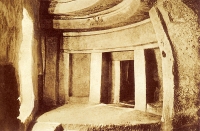
Hal Saflieni Hypogeum
Just southwest of the Three Cities in the suburb of Paolo, the Hypogeum is a labyrinthine limestone complex of man-made chambers extending some 36 feet (11m) below the surface. Exp…
Hal Saflieni Hypogeum
Just southwest of the Three Cities in the suburb of Paolo, the Hypogeum is a labyrinthine limestone complex of man-made chambers extending some 36 feet (11m) below the surface. Experts believe it was a burial site and temple for Neolithic humans who used antlers and stones to carve it out more than 5,000 years ago. It's comprised of several interconnecting chambers on three distinct levels. Used over a span of many centuries, the oldest remains at the site date back to about 4,000 BC. The site is a UNESCO World Heritage Site. Archaeologists have recovered numerous statues, amulets, figurines, and vases, many of which are on display in the Archaeological Museum in Valletta. The Hypogeum has been open to the public since 1908 and the droves of visitors have unfortunately had a negative impact on the ancient environment. Now, only eight tours a day take place with 10 people permitted on each tour. They are often booked up weeks in advance so tickets should be booked early to avoid disappointment. The tours are more or less an hour long and provide audio guides.
Website heritagemalta.org/hal-saflieni-hypogeum/
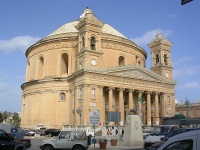
St Mary's Church
A beautiful church usually occupies the centre of every Maltese town and village. One of the most impressive of these is St Mary's in the central Maltese town of Mosta, also known …
St Mary's Church
A beautiful church usually occupies the centre of every Maltese town and village. One of the most impressive of these is St Mary's in the central Maltese town of Mosta, also known as the Rotunda of Mosta or the Church of the Assumption of Our Lady, which has a glorious blue, gold and white dome. The unsupported dome is one of the largest found anywhere in the world, with a design visibly inspired by the Pantheon in Rome. Construction on the church began in May 1833 and ultimately ended in the 1860s. Many say that St Mary's Church was the site of a World War II miracle: in 1942, while 300 people were praying in the church, a bomb crashed through the dome and landed on the mosaic floor, but did not explode. A replica of the bomb is today displayed in the church sacristy. This famous miracle draws many pilgrims and curious tourists to the church, but the ornate interior is reason enough for a visit. The church has a fine collection of religious art, including one of the largest collections of paintings by the famous Maltese artist Guzeppi Cali. The church is still an active place of worship and visitors are welcome to attend services. Entry to the church is free but donations are welcome. The church is usually closed between 12pm and 3pm.
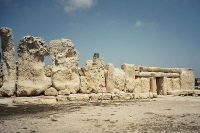
Hagar Qim
Haqar Qim is a prehistoric temple complex located in western Malta. Discovered in 1839, it dates back to around 3,000 BC and boast some of the oldest human structures on the planet…
Hagar Qim
Haqar Qim is a prehistoric temple complex located in western Malta. Discovered in 1839, it dates back to around 3,000 BC and boast some of the oldest human structures on the planet. The Hagar Qim and nearby Mnajdra ruins are close to the village of Qrendi, about nine miles (15km) southwest of Valletta. The megalithic temples are carved from giant limestone slabs, housing sacrificial altars, oracular chambers, and carved animals and idols, themselves fashioned by flint and obsidian. The largest megalith is 23 feet (7m) high and weighs about 20 tons. Although the ancient ruins of Malta are generally called temples, very little is actually known about their purpose. Many of the relics recovered from the Hagar Qim site, including the famous Venus of Malta and her accompanying fat lady statues, are on display in the National Museum of Archaeology in Valletta. Unlike some of the other temples on Malta, Hagar Qim has an impressive visitors' centre that offers plenty of background information through interactive displays. While there are shelters around the site to protect one from the elements, they hardly detract from the otherworldly experience of the ruins.
Website heritagemalta.org/hagar-qim-temples/
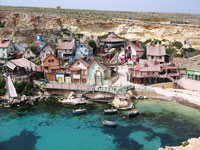
Popeye Village
Also known as Sweethaven, Popeye Village is the actual set used in the 1908s musical of Popeye starring Robin Williams and Shelly Duvall. Since then, the set has grown into one of …
Popeye Village
Also known as Sweethaven, Popeye Village is the actual set used in the 1908s musical of Popeye starring Robin Williams and Shelly Duvall. Since then, the set has grown into one of the country's major tourist attractions and is a must for those travelling with children in Malta. Kids can wander around the authentic wooden buildings such as the bakery, post office, and school house. But there's also lots of fun activities for the whole family, including meeting famous cartoon characters, boat rides, water trampolines, sun bathing decks, and games. The park now boasts the Popeye Comic Museum, showcasing more than a hundred original comics dating back to 1936. Sweethaven hosts fun stuff for kids but also organises adult events like team building exercises upon request. The little village is gorgeously situated and quite charming. The opening times and activities vary according to the season so it's best to check the official website for information before visiting in order to avoid disappointment.
Website www.popeyemalta.com



